If you want to know more information (such as product/process price, etc.), please contact us 24-hour telephone
Tungsten-bearing fluorite mineral resources are primarily distributed in China's Jiangxi, Hunan, and Guangdong provinces, with additional deposits found in countries such as Mongolia and North Korea. Tungsten is a strategic metal, widely applied in aerospace, aviation, and the new energy vehicle industries. Fluorite, a critical raw material for producing fluorine, plays an essential role in the fluorochemical sector. Therefore, the comprehensive utilization of tungsten-containing fluorite resources is of great importance.
This article provides an overview of the mineralogical characteristics, processing challenges, and beneficiation techniques associated with tungsten-fluorite ores.
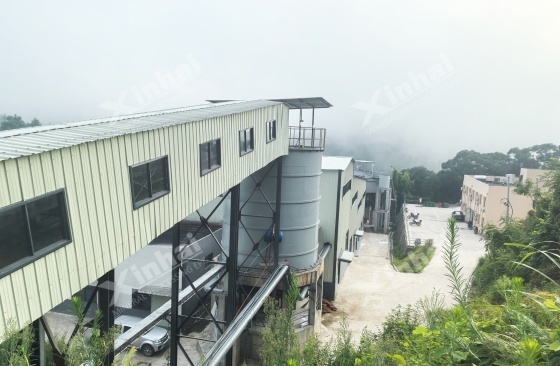
Tungsten-containing fluorite ores are characterized by the coexistence of tungsten minerals—such as wolframite and scheelite—with fluorite. The tungsten minerals are typically finely disseminated or impregnated within the fluorite matrix.
Common gangue minerals include quartz, calcite, feldspar, mica, and pyrite. Tungsten minerals generally occur as fine particles (ranging from 0.01 to 0.2 mm), while fluorite tends to be coarser (typically 0.1 to 1 mm).
There is a significant difference in specific gravity between the two: tungsten minerals, particularly wolframite, have a density of approximately 6.8 g/cm³, whereas fluorite has a density of around 3.18 g/cm³. This density contrast provides a basis for gravity separation in appropriate grain sizes.
Although tungsten minerals and fluorite differ in specific gravity—making gravity separation theoretically feasible—this method is only effective for coarse-grained particles. For fine-grained tungsten-fluorite ores, multiple technical challenges hinder efficient beneficiation and separation. The main difficulties include:
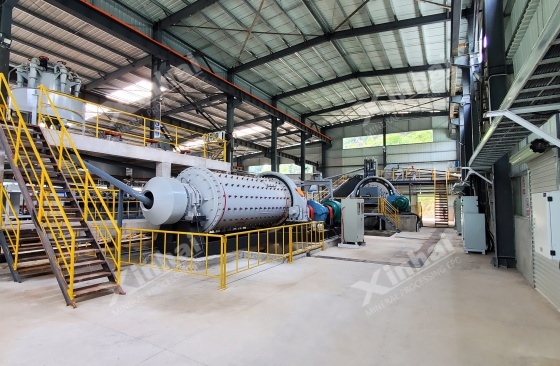
1. Similar Flotation Behavior
Both scheelite and fluorite are calcium-containing minerals, exhibiting similar floatability when using fatty acid collectors. This similarity makes it difficult to achieve effective separation through conventional flotation. To overcome this, it's necessary to enhance the differences in their surface properties using pH adjustment or selective depressants.
2. Slime Formation (Mudification)
Tungsten and fluorite minerals often coexist as fine particles, requiring fine grinding for adequate monomer dissociation. However, excessive grinding can easily cause slime formation, which adversely affects flotation performance by reducing selectivity and increasing reagent consumption.
A common solution is to implement stage grinding–stage flotation, combined with desliming before flotation. Equipment such as a trough washer can be used to remove fine slimes effectively.
3. Gangue Mineral Interference
Gangue minerals like calcite and barite are frequently associated with tungsten-fluorite ores. These gangue minerals have surface properties similar to those of fluorite and scheelite, making separation challenging. Selective depressants are needed to inhibit gangue minerals, or stage flotation can be employed to achieve effective separation.
4. Environmental and Cost Constraints
Due to the similar surface chemistry of many associated minerals, multiple reagents are often required to either activate or suppress specific minerals during flotation. This increases the consumption and cost of flotation reagents.
Additionally, beneficiation wastewater from tungsten-fluorite ores often contains toxic substances, including fluoride ions and heavy metals, which must be treated through neutralization, precipitation, or other methods prior to discharge. This adds further complexity and cost from an environmental compliance standpoint.
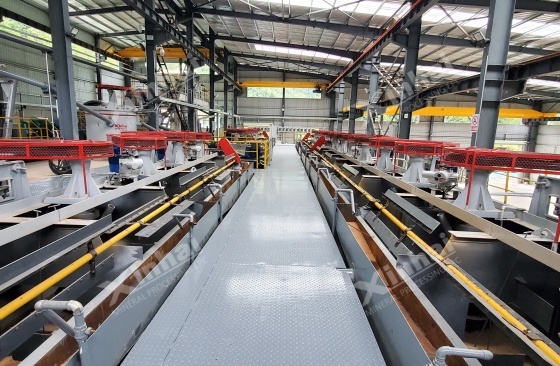
1. Ore Pretreatment
(1) Crushing:
The raw tungsten-containing fluorite ore is crushed to below 15 mm using a two-stage or three-stage crushing process, typically consisting of coarse crushing followed by medium and fine crushing. The main equipment used includes jaw crushers, cone crushers, and vibrating screens.
(2) Grinding:
Based on the mineral's dissemination characteristics, a coarse grinding–pre-concentration–regrinding process is adopted to avoid excessive sliming caused by over-grinding.
· Coarse grinding reduces the ore to below 0.3 mm.
· Fine grinding further reduces the ore to below 0.074 mm.
Typical equipment includes rod mills, ball mills, spiral classifiers, and hydrocyclones.
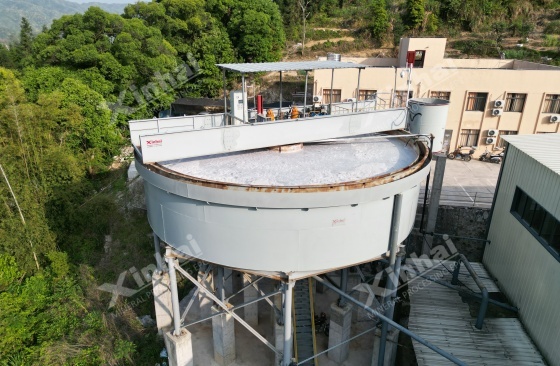
2. Pre-Concentration by Gravity Separation
Gravity separation is employed after coarse grinding to pre-enrich wolframite by utilizing its high specific gravity. This step helps discard low-density gangue minerals early in the process, thereby reducing the flotation workload downstream.
Commonly used gravity separation equipment includes spiral chutes and shaking tables.
3. Flotation Separation of Scheelite and Fluorite
The gravity tailings still contain valuable scheelite and fluorite, and their effective flotation separation is the key to the overall beneficiation process. Two common flotation flowsheets are:
(1) Fluorite-First Flotation:
· Inhibit scheelite and silicate gangue using a combination of sodium silicate (water glass) and tannin extract.
· Float fluorite using oleic acid or oxidized paraffin soap as collectors to obtain fluorite concentrate.
· Add an activator to the flotation tailings, and then use hydroxamic acid collectors to float scheelite.
(2) Mixed Flotation – Re-separation:
· Use fatty acid collectors to simultaneously float fluorite and scheelite, obtaining a mixed concentrate.
· Heat the concentrate to 80–90°C (high-temperature conditioning).
· Add sodium silicate and sodium carbonate to depress fluorite, allowing scheelite flotation for effective separation.
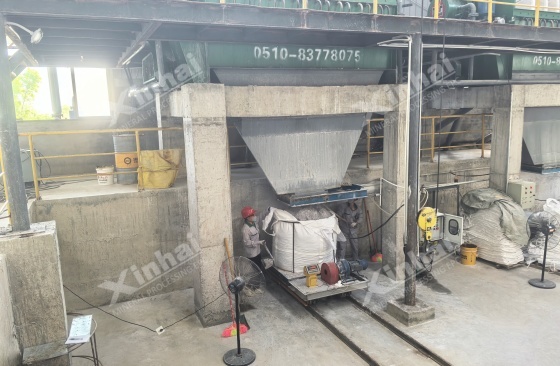
4. Tailings Treatment
Tailings are first thickened using a high-efficiency thickener, then further dewatered using equipment such as filter presses and dewatering screens to form a filter cake. The final moisture content is typically reduced to below 15%, minimizing tailings pond footprint and improving storage safety.
Conclusion
This article has introduced the mineral characteristics, technical challenges, and beneficiation process of tungsten-containing fluorite ore. Since its establishment, Xinhai Mining has undertaken numerous fluorite beneficiation projects and accumulated extensive experience. We provide comprehensive EPCM+O services across the mining value chain.
If you have any beneficiation needs, feel free to contact us for professional support.